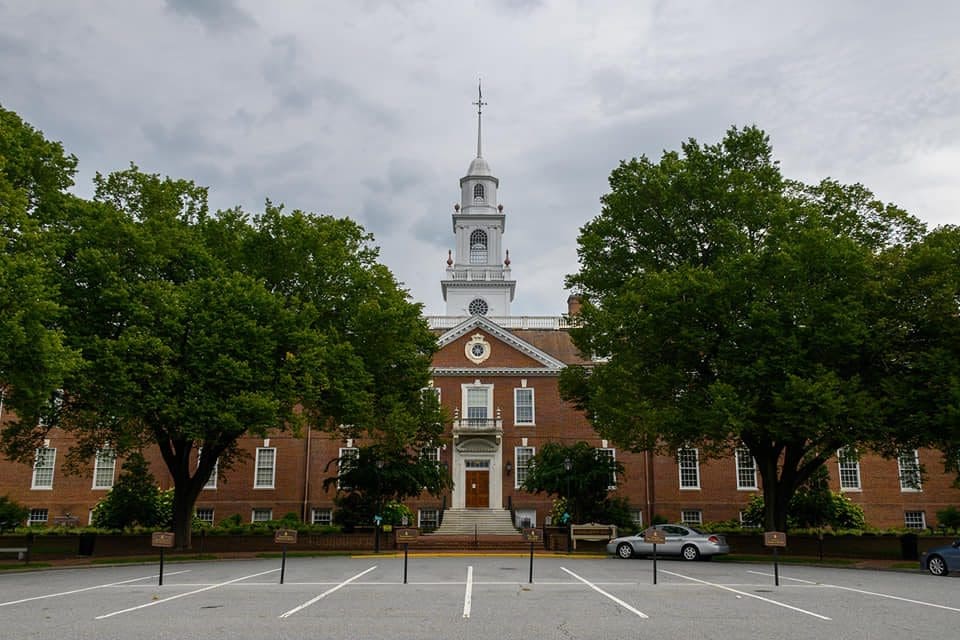Fueled by stronger than expected corporate and personal income tax, a state committee is now forecasting that Delaware will have an $823.8 million surplus in its 2023 budget.
Michael Houghton, chairman of the Delaware Economic and Financial Advisory Council on Monday called the announcement “almost incomprehensible” after the state needed to inject money into its 2021 budget to cope with COVID-19 and then forecast a nearly $1 billion surplus for the current budget.
Now it has predicted a budget for fiscal year 2023, which starts July 1, of $5.491 billion.
Ultimately, that means the council is forecasting an additional $264.3 million in General Fund revenue that can be spent by the Delaware General Assembly, said Joe Fulgham, spokesman for the House Republicans.
If predictions follow what seem to be current trends, it’s also possible the state budget may cross $6 billion in revenue for the first time.
The council refers to a surplus as “extraordinary revenues.”
Houghton marveled at the outcome.
“To have an $823 million extraordinary revenue number is is almost incomprehensible,” he said. “But I’m sure our friends in the General Assembly and all their wisdom working with the governor’s office determine what will happen with it. I can only pray that what happens is good and thought out and wise, and I say that somewhat tongue in cheek.”
DEFAC meets every few months to track the state’s revenue and spending. When the governor and General Assembly plan their budgets, they base spending on DEFAC’s estimates.
The predictions can change dramatically from meeting to meeting, depending on financial trends.
Many financial experts expected 2021 to be a tough year because federal COVID-19 payments were done, businesses were struggled with workers and COVID-19 restrictions, interest rates were expected to rise and inflation was predicted to take a chunk out of everybody’s bottom line.
Instead, said council member Lindsay Davis Burnham, half of the $123.1 million jump in new revenue came from corporate income tax, 15% from personal income tax, 10% in gross receipts tax and 5% in gambling.
No one is predicting the good fortune will last.
The state has received several large one-time payments from corporations, a few from companies that had never paid taxes before, said David Roose, the director of research and tax policy for the Delaware Department of Finance.
Some of that may be from people paying delayed bills and some from people who anticipated a change in federal tax levels, he said.
“But there have been some other transactions that are clearly extraordinary in nature and won’t be repeated,” he said.
Many are predicting strong bonuses in the financial industry alone, he pointed out. It may be anecdotal, but it gives the state planners reasons to think there won’t be any significant reductions in personal income tax.
Estimates for real estate transfer taxes have risen 33% during the last few meetings.
“There certainly still is support for real estate activity at the current level, even if things are decelerating a little bit,” Roose said.
Roose said other states also have been surprised with strong revenue figures, some of which can be credited to federal COVID-19 numbers. This year the state has been distributing $925 million in American Rescue Plan money, with cities, towns an…d others getting $335 million. It’s about to get $2.4 billion in infrastructure money.
All of that, said Claire Dematteis, special assistant to the governor who is in charge of tracking the spending, will be spent on one-time projects that do not add to the state’s annual budget.
The economy has been much stronger than expected a year ago, said Arsene Aka, economic and fiscal analyst for the Department of Finance.
He said IHS Markit, a forecasting company that advises governments and corporations, estimates a 7% economic expansion in the fourth quarter, which means growth of 5.7% for this fiscal year.
Looking at the Transportation Trust Fund, the numbers show that Interstate 95 is tracking 24% ahead of what it did last year; Route 1 is tracking 12% ahead; and 301 is tracking 39% ahead.
Share this Post





